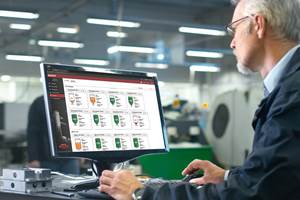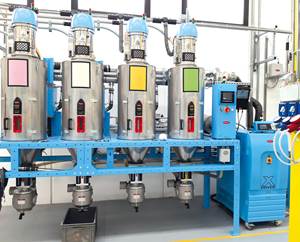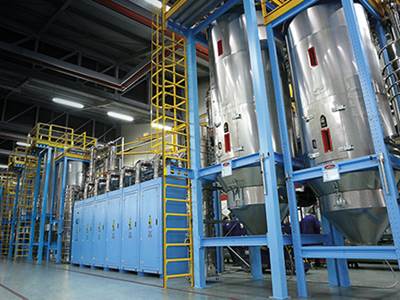Auxiliaries AT NPE: New Controls Link Auxiliaries
Industry 4.0—the internet of things—is bringing a new level of connectivity to auxiliary equipment. Here’s a rundown of developments there, along with other news in auxiliaries from the show.
Across virtually all categories of auxiliaries, suppliers have turned their attention to control systems, making the machines more connected, both to other devices and remotely to processors.
This approach was typified by injection molding machine, robotics, and auxiliaries supplier Wittmann Battenfeld Inc. at NPE2015 in March in Orlando, where it showcased what it called Wittmann 4.0, connecting nearly all the machinery in its portfolio (see June Close Up). Playing off what’s sometimes called Industry 4.0 or the Internet of Things, Michael Wittmann, the company’s general manager, gave one important reason his firm is in a good position to exploit the trend: “We’re supplying everything, so the connection is much easier for us to make than for anyone else.”
The company said the new Wittmann 4.0 technology allows a standardized communication protocol between its molding machines, robots, and auxiliary equipment from a central hub. Wittmann Battenfeld noted that the fact it makes all the equipment itself eases the task of combining and integrating various data protocols via industrial Ethernet.
With Wittmann 4.0, the company’s Unilog B6 injection controller becomes the central interaction point for the devices. Visualization of each piece of equipment will run on its own display, as well as on the molding machine’s display; and robot teach programs, blender recipes, temperature-controller setpoints, and more are stored as part of the mold or workcell setup. In this way, each time a mold is changed, the peripheral equipment’s settings and robot’s teach program update automatically.
At the show, the technology was demonstrated by connecting a B6 machine control with an R8.3 robot control, Tempro Plus D temperature controller, Flowcon Plus automatic flow regulator, and a Gravimax G14 blender, including a change of settings following a mold change.
Also on the auxiliary control front, Wittmann Battenfeld announced that by applying the CANbus networking standard, multiple Feedmax S3 Net hopper loaders can be linked together and controlled from a single console for the first time. The company says this upgrade combines the advantages of single loading units with those of a centralized control system. A high-resolution 4.3-in. touchscreen displays each separate unit’s status. A three-color LED display shows the unit’s status at a glance from a distance.
In our May Close Up, we highlighted the Conair Group’s vision to replace multiple individual operator interfaces on auxiliaries with Bluetooth-connected tablets or phones. The supplier also launched ControlWorks 2.0, a system that allows processors to view all of their equipment at a glance with an easily organizable plant-floor display. The system also lets processors recall recipes and allows them to access information remotely.
At the show, Bob Criswell, Conair’s manager of mechanical engineering, said the updated ControlWorks pushes closer to “plug-and-play,” recognizing when a new piece of equipment is added to a network. Criswell compares this to a computer noting “new hardware is detected” when a thumb drive is inserted into a PC’s USB port, for example.
In the past, the system would have to be shut down and the software completely rebuilt. ControlWorks 2.0 is not tag limited and features thousands of icons to recreate digitally your entire plant’s floor plan. “This puts the whole factory in one place,” Criswell notes. “Customers want to be able to see old equipment and new equipment.”
Another new development at the show was the predictive-maintenance concept, dubbed Prophecy, exhibited by Novatec Inc. Prophecy pairs small wireless sensors with Cloud-based data storage to help processors transition from monitoring only process conditions (dewpoint, temperature, etc.) to tracking and responding to machine conditions (see February Close Up). “All components will eventually fail,” notes Conrad Bessemer, Novatec president. “But with Prophecy, maintenance won’t be such a firefight anymore.”
Novatec ran a private beta test of Prophecy for a few months prior to NPE. Over the next months, it will open that up to long-term Novatec customers in a public beta. Current plans are to begin shipping sensors and software licenses for its vacuum pumps and central dryers in September. That offering will include both Bluetooth and ZigBee wireless internet-enabled communications. Initially, the software and sensor will track power factor, oil levels, and other internal machine parameters that are presently not recorded by process equipment.
PROCESS COOLING
Control advances were also evident among suppliers of process cooling technology. Frigel offered more details on its 3PR Intelligent Control System, which we initially highlighted in March (see Keeping Up With Technology). Officially available at the start of the third quarter, two 3PR systems were in beta testing during NPE. The company has added sensors to its chillers to track various parameters, including water consumption and temperature, pump operation, system pressure, electrical input, and fan speed.
Processors can be alerted via email if the system strays beyond setpoints, with a troubleshooting guide that automatically pulls up possible causes and fixes. In a large facility with multiple chillers that are often in difficult-to-reach locations, the technology will allow long-distance diagnostics. As an example of its capabilities, Fosco pointed out how a pressure drop across a filter would indicate that it’s time for a new filter.
Thermal Care rolled out a system it says provides easy access to all its enabled equipment for remote monitoring, control, and troubleshooting. The Connex system uses readily available third-party software and allows equipment controls to be mirrored on a computer, tablet, or cell phone. Processors can be alerted to alarms via email or text, with the ability to connect more than 100 units at the same time. Using TeamViewer software and a Windows 7 based small industrial PC, processors can mirror machine control interfaces from one hub.
As reported in the June Keeping Up section, Thermal Care also introduced the new NQV Series portable chillers at NPE, touting their use of variable-frequency drives (VFDs) on the compressor, a first for portable chillers in the plastics industry, according to the company. Thermal Care also expanded its TC Series of centrifugal, magnetic-bearing central chillers up to a 250-ton, dual-circuit model, offering oil-free, quiet operation that reportedly saves more than 30% in energy usage. Sizes available are now from 60 to 250 tons.
As mentioned in our March NPE preview, Advantage Engineering Inc. introduced an updated color touchscreen control for its Sentra line of temperature-control units (TCUs). The goal is simplified operation, according to Jon Gunderson, sales and marketing manager, who noted, “If you can operate a phone, then you can operate this.” The updated control features a complete troubleshooting guide and is easily retrofitted onto existing Sentras, according to Gunderson. At showtime, the company had six of the new controls in the field on trial with five different customers. The new system allows processors to send machine data to the Cloud and can alert plant managers to equipment alarms via e-mail or text message.
Exhibiting at NPE for the first time, MultiStack showcased its own water- and air-cooled chillers with magnetically levitating drives. The oil-free drives have no metal-on-metal contact, reducing maintenance and energy consumption. Featuring a two-stage refrigerant impeller and a drive shaft that rotates at about 50,000 rpm, the chiller reportedly has minimal inrush current at startup, eliminating the lights-dimming effect many compressors cause when they first come on. This can save on peak load costs.
A new factor in process cooling is Universal Dynamics which is marketing DigitempEvo water-cooled chillers from sister company Aquatech. Energy-saving features include a digital scroll compressor, electronic expansion valve, only one pump per circuit, and free-cooling option. Operating range is -5 to +90 C (see May Starting Up).
Mokon highlighted its new high-temperature, high-pressure system, Duratherm Max. The circulating-water TCU ranges up to 380 F and 300 psi. A booster pump helps the unit get up to pressure quickly, and it utilizes an air-cooled heat exchanger instead of a water-to-water setup.
EcoChillers Inc. promised showgoers more cooling capacity with the same chiller, thanks to its application of variable-frequency drives (VFDs) on each compressor. Highlighting its Ecogreen chiller, the company noted that it varies the speed of compressors and fan motors based on actual demand. The company said the technology uses approximately 30% less energy and allows stepless adjustment of the compressor to capacity.
MATERIALS HANDLING
Hamilton Avtec Inc. revamped its Meridian loader control, adding a “completely configurable” 7-in. touchscreen, allowing managers to decide what operators do and do not see.
L-R Systems Inc. highlighted its WSB 5400 controller at NPE2015—a new 7-in. color touchscreen that easily retrofits to existing L-R Systems weigh-scale blenders. The WSB 5400 plugs into the company’s blenders going back to the 1990s, bringing greater functionality to older systems.
The WSB 5400 can manage up to six components in the blender, storing up to 100 recipes, with accuracy within 0.01 lb per component. In the recipe setup function, users can enter the desired percentages for each component minus the amount of virgin material, which the controller will calculate automatically.
Foremost Machine Builders unveiled new distributed I/O architecture for some of its products, noting that in addition to simplifying installation, the feature also allows for easier expansion using additional nodes, splitters, or boosters. Using distributed I/O, versus point-to-point wiring with high channel counts and multiple controllers, will simplify troubleshooting, Foremost says. In case of a system failure, indicating lights on the nodes and alarms on the display isolate the problem quickly.
The Foremost Distributed I/O system uses an AS-i (Actuator/Sensor interface) master controller module that communicates with a logic controller as an Ethernet device or a PLC rack-mounted device. AS-i networking completely eliminates wire bundles and junction boxes, reducing the control cabinet’s size. Foremost notes that the network can work directly in conjunction with an existing PLC or be linked to a higher-level bus system for low-cost remote I/O.
Una-Dyn introduced WiFACS, the wireless version of its FACS central control and monitoring system for all its auxiliary equipment. With WiFACS, monitoring is now possible on a tablet.
The new, patent-pending R-PRO conveying system from Conair claims to virtually eliminate the “angel hair” and equipment wear caused by high-speed vacuum conveying, R-PRO, which stands for ResinProtect Conveying System, moves pellets in compact groupings at speeds ranging from 230 to 1200 ft/min, versus the 4500 to 6000 ft/min often found in conventional high-speed conveying.
Conair says the control system detects and continuously reports exactly how fast the resin is moving and adjusts that velocity, creating variable material speed. In a conventional system, Conair notes that over a 400-ft run with five elbows, the resin’s speed will double by the time it reaches its destination, whereas with R-PRO, the material speed would increase only slightly over the full distance.
At the show, Conair showed the system moving pellets through a clear tube at 363 ft/min with throughputs of 1240 lb/hr, using around 2 hp of the 5 hp available. A system of this size would top out at throughput of 5000 lb/hr, but Conair can supply units for up to 30,000 lb/hr. Conair sources noted that the threshold for angel-hair production is resin speeds around 4000 to 5000 ft/min., with R-PRO remaining well below that. In addition to reduced wear and elimination of resin damage, slower speeds and no dust mean less static, which can lead to material sticking as well as particulate attraction, an issue in cleanrooms.
Pelletron showed its Pellcon 3 system for material conveying at NPE2015, combining what it calls strand-phase conveying with its Pellbow pipe elbow and DeDuster dust-removal technology. Strand-phase is gentler conveying of material, the company says, than dense-phase conveying. Speeds range from 3000 to 5000 ft/min and use smaller pipes than dense phase, resulting in more material in the pipe. The company says processors can use a blower instead of a compressor, saving money and energy.
Pelletron featured its C20 small deduster, as noted in our March preview. At the show, the company also discussed its newly developed deflectors designed to control material flow rate. By changing the inlet, the company eliminated the need for a rotary valve, reducing the system’s cost and height. Throughput ranges up to 330,000 lb/hr.
LOADING, FEEDING, BLENDING, CONVEYING
Universal Dynamics showed its recently developed PureFlo filterless vacuum receiver, as well as a new conversion kit (inlet section) for existing Una-Dyn receivers. Other new Una-Dyn products include the following (see K 2013 report for more details):
• EasyLink automatic coupling unit and distribution manifold with 20, 40, or 60 ports and a complete purge between changes;
• Quantum gravimetric batch blender, available in four models with the option of metering the batch on the floor and conveying it to a mixer on the molding machine;
• Ryng low-profile, easy-to-install weighing unit that mounts beneath a vacuum receiver to measure real-time loading by weight and totalize resin use for inventory control.
Una-Dyn also announced its return to supplying powder bulk-handling equipment, since its Italian parent, Piovan, acquired Penta, an Italian firm specializing in powder handling.
Comet Plastic Equipment LLC introduced a compact single-component gravimetric feeder that uses a patented system to precisely deliver additives directly into the machine’s feed throat. The ColorSave Micro continuously monitors the load cells to track the feeder’s weight-loss rate. Load cells are protected in open hoppers, with no gates to open or close, for a simple design that Comet says ensures minimal setup time and reduced maintenance.
Comet says the system offers an average savings of 33% of color concentrate compared with direct-mounted volumetric blenders. Feeding-range fluctuations are minimized due to a special control algorithm, and the system can deliver additives down to a single pellet per cycle.
Plastrac launched a cart-based blending system, that it says can help processors save time and space when running multiple stand-alone processing machines. The company says the cart-based blending systems speed up and simplify formulation changes. Plastrac has been supplying custom single-cart systems for several years and recently standardized them. The cart systems launched at NPE2015 come in duplex and independent dual models.
The duplex dual is based on a single virgin material feeder and two color feeders that share a controller and blower system and operate independently with either manual color filling or an automated color loader. The independent dual loads two different resins for double-shot machines, with separate hoppers for easier color changes. A full dual can accommodate two natural resins and up to two additives, with a shared blower system and a control box that can manage up to six disc feeders. Operators can then switch colors electronically.
PARTS CONVEYING
In June Keeping Up, we highlighted Kongskilde’s new system for using vacuum to move parts over long distances with no damage. Along similar lines, TEC Engineering Corp., displayed a continuous vacuum conveyor system for moving lightweight parts. TEC says the new design reduces energy consumption by 50% or more, allowing processors to convey long distances using a single motor. Speed controls throughout the system help avoid part damage or angel-hair formation. The company also noted that since its design is pulling, versus pushing, it won’t jam. As a further benefit, the conveying air is cool, allowing molders to shorten cooling portions of the cycle, since parts can cool in the conveyor.
Parts entering the hopper get sucked into the tube and travel the entire length at the same speed, before entering the progressive-radius cyclone, which starts with a wide path then narrows. Parts never go around more than 270° when circling. Over the course of the five-day show, TEC representatives estimated that parts traveled 200 miles without damage. The company has tested systems up to 1200 ft long, successfully moving 8000 1-g caps/min with an 8-hp blower.
DRYING
As reported in our March preview, Universal Dynamics brought out several new products. Its new top-of-the-line AutoMate multi-hopper central drying system uses the company’s PCT3 dryer with energy-saving variable-speed fan along with individually packaged modules consisting of a hopper, heater, local control, dry-air supply/return manifold, and stand. Each hopper has individual temperature and airflow control and tells the dryer what CFM it requires. This system measures the temperature difference between inlet and outlet air for overdrying protection and both minimizes energy consumption and stabilizes the process. Optional Focus-fit controls provide communication between the central dryer control and each hopper, allowing an operator interface at both locations.
The new Vantage Series portable dryers are twin-tower, single-blower models with stainless hopper and touchscreen control that can load both the hopper and the processing machine. This total redesign of Una-Dyn’s GS Series, which it replaces, is said to be very competitive in price and performance and available for quick shipment.
Є-Plus Series Dryers from Dri-Air Industries, E. Windsor, Conn., are said to offer faster, more complete drying with unmatched energy efficiency. Their novel parabolic tower design, unique heater configuration, and optimized airflow are said to maximize moisture pickup for ultra-low dewpoints, faster drying, and dramatically reduced regeneration energy usage. Increased hopper insulation further improves the energy efficiency with even the most challenging, hard-to-dry plastics. Є-Plus Series Dryers are offered in three sizes with drying capacities of 25, 50, or 100 lb/hr (see February Keeping Up).
WELDING & SEALING
As we reported in our March preview, several companies showcased brand-new and/or upgraded welding equipment and integrated assemblies. Among these were Dukane Corp. (dukane.com), Herrmann Ultrasonics, and Sonics & Materials (sonics.com). Meanwhile, both Branson Ultrasonics and Rinco Ultrasonics unveiled their latest wares.
Said to set a new performance standard for vibration welders, Branson’s GVX Series are suited for applications such as auto taillights and large appliances. These welders boast improved weld quality and consistency through continual feedback from closed-loop sensors. They also offer fast cycle times to support high-speed, automated applications and a smaller footprint that still features a larger lift table than standard vibration welders. They also have a convenient rear door and symmetrical design, providing easy access for tool changes and part loading/unloading. An industrial PC-controlled servo drive has fewer parts and no hydraulic oil, offering speed, accuracy, and energy efficiency, along with reduced maintenance and downtime.
Branson also featured its 2000Xc ultrasonic welder with electronic programming and Ethernet connectivity, aimed primarily at medical devices but also consumer electronics. And the company has modified its basic ultrasonic bath cleaning technology for use with 3D-printed parts.
Rinco announced the opening of a new fully-equipped machine and tool operation at its U.S. manufacturing headquarters in Danbury, Conn., bringing machining and tooling in-house after outsourcing those functions for over 14 years. The company showcased its patented Hybrid PPS0145 film-sealing technology for ultrasonic sealing of flexible-pouch packaging. This hybrid seal geometry incorporates the well-known ultrasonic barrier seal that the flexible pouch industry has used for some time, and is said to create completely hermetic seals through any type of contamination, along with full cosmetic seal that continues up to the top of the pouch, eliminating any possibility of contamination above the barrier seal zone. Rinco plans to strengthen its position in flexible packaging with this film-sealing solution, which reportedly simplifies the use of ultrasonic sealing and creates more aesthetically pleasing seals.
Among this technology’s key benefits is that follow-up heat seals are now eliminated, along with the cooling station. This allows OEMs to design and develop equipment with a smaller footprint and fewer stations. The hybrid seal geometry uses a 3-4-mm wide barrier and reduces the amount of force and time required for the cosmetic portion of the seal by decreasing the amount of interlock geometry designed into the tool. This reportedly allows for faster cycles compared with a full, extremely wide barrier-type seal. The cosmetic portion of the seal has less strength than the barrier portion, but the materials are bonded through the top of the pouch and don’t allow any captured contaminants or peeling.
Rinco also launched a cleanroom version of its Dynamic 300 Series benchtop welder for medical applications. The new 3000CR offers amplitude and force profiling with extensive graphing capabilities and detailed process setup analysis through the use of included software. With its servo-pneumatic control system, it can change forces and velocity in real time via CANopen communications. It is available in both the Dynamic series and Standard series as well as in 35-kHz and 20-kHz versions from 900 to 3000 W.
A very compact Ecoline generator was also launched by Rinco that weighs only 7 lb. It comes with a complete line of hand units including the Hand Wand, Handgun, Hand Tacker, and Hand Cutter—all available with various cable lengths. It utilizes a 35-kHz frequency that offers advantages over traditional 40-kHz systems.
Rinco’s advanced digital circuit technology is said to ensure highly robust and repeatable performance and long-term durability. Key features include an audible click when ultrasonics are active; a status LED built into the hand wand; and a single connection cable that allows for the high-voltage signal, start signal, and air cooling to be routed through one connector, eliminating the multiple cables typically used with today’s generators.
TESTING & MEASUREMENT
NPE2015 featured a broad range of new testing instruments, as previously reported:
• Instruments for testing mechanical properties from Tinius Olsen ), Shimadzu Scientific Instruments, and Testing Machines, Inc.;
• Weather-testing equipment from Atlas Materials Testing Technology (atlas-mts.com) and Eye Applied Optics;
• Analytical instruments from Malvern Instruments and Linseis Inc.;
• Color and appearance instruments unveiled by Paul N. Gardner Co., Zeiss Industrial Metrology, and X-Rite Pantone.
Datacolor unveiled its redesigned Check 3 portable spectrophotometer, which is said to deliver industry-leading color measurement while offering excellent correlation to Datacolor’s well-known 600 series of benchtop instruments.
Check 3 features a user interface with a modem and easy-to-navigate color LCD display, as well as an LED-illuminated viewing port to enable users to position samples very precisely and ensure accurate measurement. Its horizontal configuration is said to allow measurement in height-constrained areas. With its enhanced two-way Bluetooth interface, the instrument allows users to seamlessly transfer standards and batches between the instrument and Datacolor’s Tools color QC software. The high-speed USB port allows easy data export, while also providing support for peripherals such as wireless keyboards and barcode scanners.
Related Content
Single View of Bin & Silo Material Levels in Multiple Locations
Got a bin in Buffalo and a silo in San José? BinMaster’s latest addition to its cloud inventory software lets you see all your resin inventory anywhere in one view.
Read MoreHow to Effectively Reduce Costs with Smart Auxiliaries Technology
As drying, blending and conveying technologies grow more sophisticated, they offer processors great opportunities to reduce cost through better energy efficiency, smaller equipment footprints, reduced scrap and quicker changeovers. Increased throughput and better utilization of primary processing equipment and manpower are the results.
Read MoreFinding Efficiencies in How Components Work Together
Auxiliary systems are vital to the proper functioning of a plastic processing line, and they can be a source of major cost and efficiency improvements.
Read MoreConveyor Controller Ideal for Expanding Plants
Billed as the most flexible and reliable discrete wired conveying controller on the market.
Read MoreRead Next
AUXILIARIES AT NPE: More Control, Flexibility, And Efficiency
These are key trends in the many kinds of auxiliary equipment displayed at this month’s show. You’ll also see equipment designed to be virtually ‘foolproof.’
Read MoreAUXILIARIES AT NPE: More Control, Flexibility, And Efficiency
These are key trends in the many kinds of auxiliary equipment displayed at this month’s show. You’ll also see equipment designed to be virtually ‘foolproof.’
Read MoreLead the Conversation, Change the Conversation
Coverage of single-use plastics can be both misleading and demoralizing. Here are 10 tips for changing the perception of the plastics industry at your company and in your community.
Read More


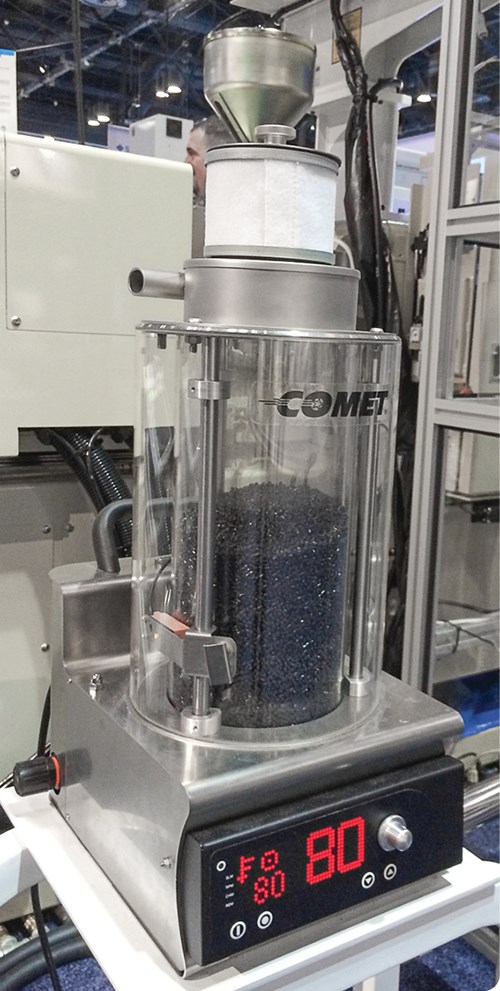

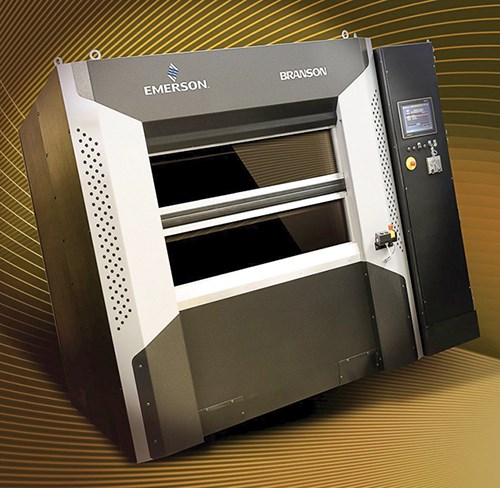
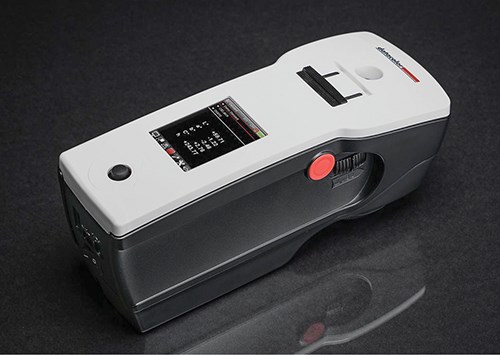
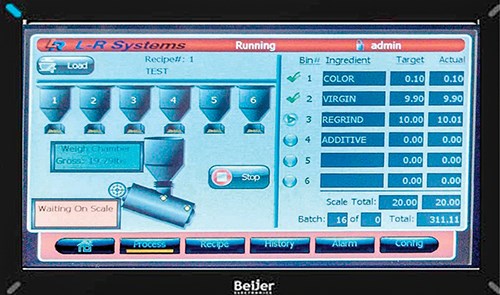












 (2).jpg;maxWidth=300;quality=90)









